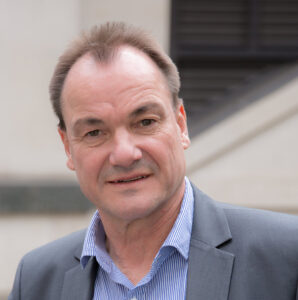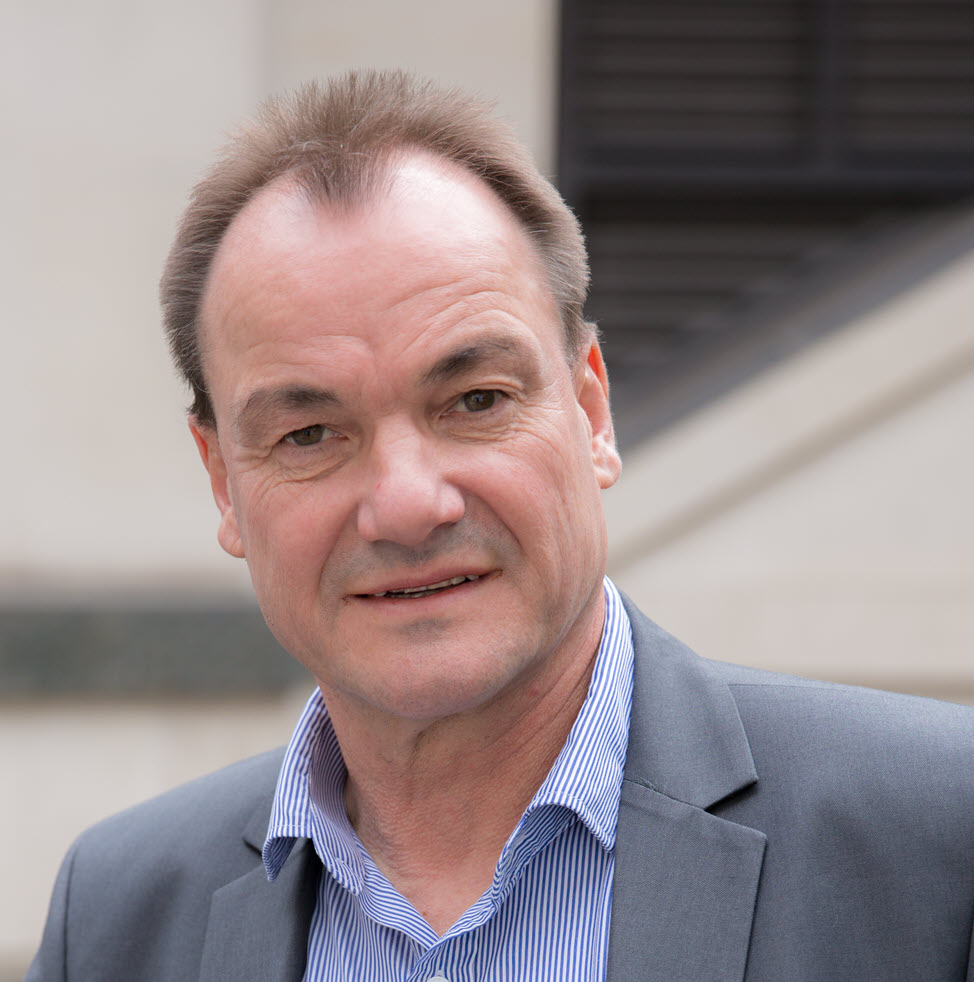
Telematics solutions for the motor insurance sector are not new. Tracking driver behaviour through black boxes to better manage risk, particularly for younger drivers, is a fairly well-established practice. However, the stakeholders involved in the value chain are diverse; car makers, OEMs, insurance underwriters, brokers and the drivers themselves. Launching a new technology into this market requires working with a range of partners all with their own interests and priorities.
ThingCo is a good example of a nimble startup using leading-edge technologies to provide a telematics solution that works both for drivers and the insurance sector. This interview with ThingCo co-founder and CEO, Mike Brockman, shows how building a data-driven platform integrated with easy-to-install devices has the potential to transform risk management for insurers and millions of drivers.
Martin: Can you tell us a bit about the history of ThingCo, who founded it and why?
Mike: ThingCo is an insurtech company, founded in 2018 by myself, Mike Brockman, and Jonathan Valentine, our Chief Technology Officer, focused on developing next generation telematics built on the latest technology. The leadership team has grown since that time with Martin Williams joining us as Chief Operating Officer and Alex Brockman as Head of Operations, bringing decades of experience in telematics.
I have worked in insurance for over four decades and pioneered telematics in the UK having founded the world’s first telematics only insurance provider – Insure The Box – in 2009. I built the company from scratch in an environment where people thought telematics as ‘Big Brother’. We proved the sceptics wrong, selling over 800,000 policies during my time with the business. However, I could see that there was a big opportunity to change the game in telematics through a next generation device that offered tangible benefits to both the consumer and the insurance provider.
Our vision was to create a telematics device that consumers would actually want and value in its own right – rather than something that is imposed on them just to get cheaper insurance. I have always believed that telematics would reach its potential when you really empower consumers with the data and a core aspect to this is being there for them when they have an accident. Like an Apple Watch on their wrist, a smart little black box in the windscreen has the same feel of quality, and is there to support them, first and foremost, whilst at the same time giving the insurer the “tools” to tune risk and deliver the best service.
Data processing power is key. ThingCo had the advantage of starting with a clean sheet of paper and knew that to meet our ambitions to bring to market next generation telematics, we needed huge data processing power at low cost. In one of the first examples of the power of Amazon Web Services, we designed a completely serverless platform solution using AWS IoT to efficiently process thousands of data points a second in real-time.
Martin: What are the company’s core product/service offerings?
Mike: We have designed, manufactured and rolled out an AI and Voice enabled self-installed telematics device that is collecting second by second driving data with a potential of 16,000 Htz g-force data in a crash situation. No other telematics device has this capability. Branded Theo, the device looks smart, is super easy to install, will talk to the driver in a collision to expedite support and is solar-powered – in fact, it is one of the first examples of the application of green energy in insurance. The device sticks discreetly to the windscreen of the car and in most situations will run for 50,000km per year before needing to recharge.
This solves practical issues such as car battery drain, in-car distraction, and data accuracy common in other telematics solutions whilst still being low cost for the sector and convenient for the customer. Self-fitted in seconds, the device can easily be transferrable and re-cycled reducing costs to insurers further.
The use of solar energy is a selling point in itself but the real benefit is that it is powering new services that go beyond the basic insurance product – driven by highly accurate, second by second, driving data and crash detection.
A crash alert kicks in and activates a voice command using Amazon Lex and Amazon Connect in the device that will ask the driver if they had an accident. The power of the technology means we can identify exactly what has happened, we can establish if anyone is injured and need emergency services or need other services such as a hire car to get them home. This type of response transforms the claims process for the customer and the insurance provider.
Our solar-powered telematics device is now being adopted by insurance providers in the UK, across Europe and as far as Asia and my vision to make the market think differently about telematics is becoming a reality.
Martin: The ThingCo telematics platform offers API access to partners. How do you see this platform evolving in the coming years?
Mike: Our platform capability can be up and running within a week, anywhere in the world. The suite of APIs can seamlessly integrate into partner systems. We have built the APIs to cover most operational needs of our partners but these will be continually developed to meet evolving requirements. We also provide them with the essential tools in a “tool kit” so they can manage their telematics book themselves if necessary, in a modern digital framework.
Martin: You sell your products and services to B2B and B2C markets. What are some of the challenges for a new company to sell across these very different sales channels?
Mike: We started out with a professionally fitted device sold directly to consumers via our website and through Amazon. The experience was painful but also a great learning process for us. At the same time it took over a year to gain regulatory approval to offer insurance as part of the package. Then the pandemic came along and this put a halt on professional installations.
We decided then to focus on our B2B proposition. This is a completely different ball-game. We know how the insurance market works, we know the people we need to engage with. Yet still, it was a challenge in the beginning to help the market understand how and why our solution should be the next step in their telematics journey. You need to remember that the insurance industry is incredibly risk averse and the insurers have had a lot of false starts with telematics. So we decided to start with Brokers who tend to be innovating faster in this space and that’s reflected in a series of partnerships we have secured in the last few months.
We will go back to our consumer proposition towards the end of this year – we will then be armed with TheoPro with ADAS, HD Camera, blackspot warnings – built from all the experience gained from the roll-out of solar-powered Theo device, at a price that customers can afford.
Martin: Beyond helping drivers and insurers reduce risks, how else might the data your telematics products collect be used?
Mike: Motor insurance is all about protecting policyholders when they have an accident. Telematics transforms this experience, but the industry hasn’t really grasped this point. The majority of customers just want their car back, repaired and ready to go. A smart FNOL process, where the telematics data is instantly relayed to the Operations Centre, displaying likely fault/no fault, accident position and time, severity and trips journeys before the accident; enables the agent to immediately deal with the claim in the best way possible. If the customer account matches the telematics data; great, the claim can be waved through. Any differences, further questions can be asked and potential fraud can often be identified quickly. The key to making this work is to marry the operational processes with the telematics data provided; all in real-time.
Another great example of telematics data use is the development of reward programmes. Incentivising customer to drive better is a win-win situation for everyone and it really works. It’s all about customer engagement and feeding back fun things that keep the customer motivated. Insurers talk a lot about digitalisation, but telematics gives then the perfect platform to do it. Cool Apps with feedback on driving behaviour, rewards and personalised driving scores massively increases the number of customer touchpoints.
Martin: The rise of smart cars and driverless vehicles is challenging incumbents in this sector. How do you see automotive value chains evolving over the next decade?
Mike: I think that before we embrace the debate on driverless cars, which I personally think there’s a long way to go before these become the norm, if ever, the industry will be focused on Electric Vehicles (EVs). These are still relatively small in number but will massively increase over the next ten to fifteen years and they will come in all shapes and sizes. EV technology is relatively expensive at present, and there are still many challenges, but it will become the norm. The degree of smartness will vary, as new models will have to be designed at low cost as well as the Tesla like top range models. These will change risk, with different driver experiences, different accident repair requirements and battery power technology improvements. If you add on driver assist technology (different from driverless technology), there are a lot of new things for insurers to get to grips with. Telematic devices are a great entry point for insurers to begin to understand these changing risks and get ahead of the problem.
Martin: Do you have plans to extend your products beyond the automotive sector?
Mike: Not at this stage, we see significant untapped opportunities in the motor insurance market, particularly in relation to older drivers and van drivers.
Martin: Earlier this year you raised £3m in a funding round. How will ThingCo use this investment?
Mike: I never thought I’d be involved in the actual manufacture of devices. However, I learnt that this was the only way you can keep ahead of the game; to be in control of features and making sure they match customers’ needs. Very ‘Apple’ I know. There are more than 200 parts to a Theo and these all have to be ordered well in advance of the demand for them and this requires cash. As a business, you always need to be preparing for the future not just for today and we have a continuous R&D program in play with all our ideas and innovations which will be our products of tomorrow. Money spent very wisely I think!

